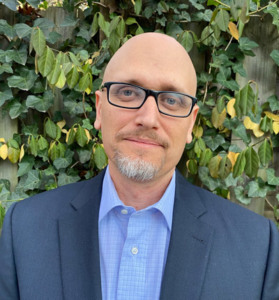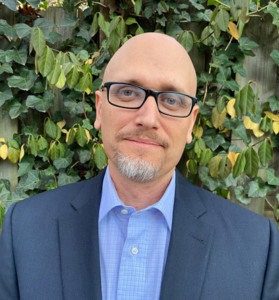Editor’s Note: Agri-Pulse and The Chicago Council on Global Affairs are teaming up to host a monthly column to explore how the U.S. agriculture and food sector can maintain its competitive edge and advance food security in an increasingly integrated and dynamic world.
Teresa Museni, a smallholder farmer living in Western Kenya, is a victim of Russia’s invasion of Ukraine. Like with farmers in America, the ripple effects the war has unleashed in the global fertilizer market adds massive uncertainty to her ability to farm. As a farmer who eats most of what she grows, she can’t pin her hope on analysts who predict rising crop income will offset the increase in production costs; increased fertilizer costs mean that her family will go hungry.
Farming on about an acre of land, Teresa is one of One Acre Fund’s 1.5 million clients in Africa. As a non-profit social enterprise, we provide farmers like Teresa the financing and timely access to high-quality fertilizer and seed that empower her to grow her own way to food security. With these constraints taken away, she can invest in what she needs to grow significantly more corn, which her children can eat, or she can sell to cover the cost of their clothes and school fees.
The skyrocketing price of fertilizer, and the decreasing access to it in East Africa, is threatening her livelihood. From January 2021 to date, starting with Covid-related supply disruptions, fertilizer prices have steadily increased, a trend that accelerated when the invasion of Ukraine started.
We have seen the average price of DAP increase from $401/MT in Jan 2021 to $1053/MT today (a 159% increase); Urea has increased from $269/MT in Jan 2021 to $810/MT today (a 201% increase).
Russia and Belarus account for a massive portion of the world’s fertilizer, including 40% of potash exports and 48% of ammonium nitrate. Immediately following the invasion, we saw buyers globally, with these shortages of raw materials in mind, rushing to the market to secure fertilizer for their planting seasons. Many buyers were willing to pay premium prices, which has led to a difficulty for traders in East Africa to secure fertilizer, and key products such as CAN & NPK are now scarce throughout the region.
In response to this crisis, service providers should encourage best practices to squeeze the most value out of any fertilizer that does get to the farm. Smallholders - with limited land to plant on - are well positioned to micro-dose the application of fertilizer - where they use as little as 1/20th the amount as on a typical US farm (by literally putting a small scoop over each individual seed). This is a practice One Acre Fund has promoted successfully for more than 15 years. There are longer-term ways even more efficiencies can be found, such as shifting fertilizer timing, using soil specific blends and by training on composting and finding local organic options; practices which protect both the environment and farmer’s bottom lines. However, these won’t help them survive the price rise this year. Fertilizer is still a critical input to enabling smallholders to grow enough food to eat, especially given that 180 million Africans live on degraded land. The predictions of massive yield drops around the world as the fertilizer supply is further constrained are dire: more direct help is needed now.
 Colin Christensen
We were thrilled that the US announced a significant increase in food aid to address hunger crises that have resulted from the invasion of Ukraine, as food prices have skyrocketed. American farmers play a critical role in supplying the food that will help feed the world at this pressing moment. The US should also consider a similar surge of support to address rising fertilizer prices, and America’s farmers can play an equally important role in advocating for the US government to take a lead in resolving this more overlooked dimension of the global food crisis. While President Biden’s $33B Ukraine budget supplemental request is welcome, the international food crisis the invasion has exacerbated is not adequately addressed in this request. As part of a broader call for more food assistance in this package, we call on the Administration to explicitly address the fertilizer crisis. Programs to expand production of American-made fertilizer could be extended to help farmers in the developing world. US development agencies could create a new financing facility to ensure the supply and affordability of fertilizer in key global breadbaskets, and work with local organizations that have the logistical capacity to rapidly procure and distribute it.
Colin Christensen
We were thrilled that the US announced a significant increase in food aid to address hunger crises that have resulted from the invasion of Ukraine, as food prices have skyrocketed. American farmers play a critical role in supplying the food that will help feed the world at this pressing moment. The US should also consider a similar surge of support to address rising fertilizer prices, and America’s farmers can play an equally important role in advocating for the US government to take a lead in resolving this more overlooked dimension of the global food crisis. While President Biden’s $33B Ukraine budget supplemental request is welcome, the international food crisis the invasion has exacerbated is not adequately addressed in this request. As part of a broader call for more food assistance in this package, we call on the Administration to explicitly address the fertilizer crisis. Programs to expand production of American-made fertilizer could be extended to help farmers in the developing world. US development agencies could create a new financing facility to ensure the supply and affordability of fertilizer in key global breadbaskets, and work with local organizations that have the logistical capacity to rapidly procure and distribute it.
America’s response to the inhumanity of the invasion of Ukraine has been laudable. This country has helped relieve the suffering of the refugees from the war, and the investment in food aid will help address the famines that will also result from it. However, farmers like Teresa will suffer outside of the world’s attention, as her family will not visibly starve. But their bodies, and future, will be stunted. In the next season, when she is unable to grow those extra bags of corn, her kids will be forced to skip meals; they could be kicked out of school when fees are left unpaid. Teresa is not looking for a handout; she is willing to put in the effort to grow her own way out of hunger. We just need to help farmers like her purchase enough fertilizer to get to work, and collectively they can prevent another food crisis in 6 months.
Colin Christensen is One Acre Fund's Global Policy Director, based in Washington DC. He has worked and lived in Africa for more than 25 years, supporting the growth of organizations committed to innovative and evidence-based solutions to ending global poverty and hunger.
For more ag news and opinion pieces, visit www.Agri-Pulse.com.


